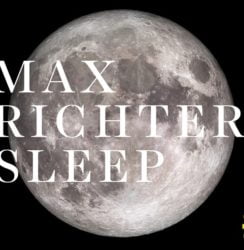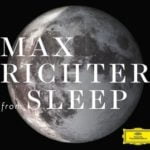From 7″-single, 12″-single, vinyl album to compact disc, the physical format has always limited the maximum length of an album. But with internet broadband availability this has stopped being a limiting factor: compositions can be as long as the composer wants them to be.
If you forget about download versions but focus on streaming audio, there is no limit in length at all: check longplayer.org for instance, a web stream of a thousand (!) year long composition – and a nice one to listen to, too!
This does not mean that there were no long-form compositions ‘before the internet’: around 1985 John Cage (who else!) wrote ‘As SLow aS Possible’ (ASLSP) for organ – it’s performance in Halberstadt, Germany, ‘started in 2001 and is scheduled to have a duration of 639 years, ending in 2640’.
Long-form compositions are a challenge to a composer, because he (she) has to deal with the audience’s relatively short attention span: not many people will be able to focus and keep their concentration for 4 hours or even more.
For this reason, it is no surprise that several long-form experiments are found in the realm of ambient music, and are often written to be played during sleep.
Some examples from this blog alone: Robert Rich‘s Sleep projects “Somnium” and “Perpetual“, Stephan Mathieu‘s “Nachststücke” and Marsen Jules’ 24 hour version of “The Endless Change of Colour“. And let’s not forget about Leif Inge‘s 24 hours stretched version of Beethoven’s Ninth (“9Beet Stretch“)!
Enter Max Richter, who recently surprised the musical world with his latest project called “SLEEP” an 8 hour (+ 24 minutes) composition, intended to help you sleep.
It is not a drone piece, but a set of 31 ‘variations’ meant to be played in a continuous sequence. It is not a purely electronic piece either (although there is a significant role for synth and electronics). The main themes are performed by a real-life ensemble: the American Contemporary Music Ensemble, featuring the beautiful soprano voice of Grace Davidson and Max Richter himself playing piano, organ, synth and electronics.
Different sleep phases are represented with their own variations. The thematic parts – performed in various settings by the acoustic ensemble – representing the moments of lighter sleep, while phases of deep sleep are guided by less distinct synth drones and abstract soundscapes.
“It is a piece that is meant to be listened to at night.”
Its purpose is nót to be a full-fledged dramatic symphony with extreme dynamics. That would only keep you awake. The basic themes sound deceptively simple, and are often repeated in (slightly) different variations – resulting in a soothing effect, a vaguely familiar feeling.
But don’t underestimate the difficulty of playing relatively ‘simple’ themes like this – especially in a live setting!
“Somehow, in Europe, over the last century, as complexity and inaccessibility became equated with intelligence and the avant-garde, we lost something along the way. Modernism gave us so many stunning works, but we also lost our lullabies.”
But: lullabies had a specific purpose – they were sung to help you fall asleep. They were not sung continuously for the rest of the night until you woke up… So how is this different?
“It’s a set of questions. Is there a difference between ‘listening’ to music and ‘hearing’ it? Is there even such a thing as listening while you’re sleeping, because we don’t ascribe that sort of intentionality to sleep?”
To be honest: I have tried but could not sleep to it very well. Partly because I’m a light sleeper, but also because there are certain aspects in the work that do demand attention – it is not completely ‘ignorable’.
So I prefer playing it at daytime. It has the exact length of a working day, and proves to be a great accompaniment for a full days work, at home, alone.
I found out that the piece does not become boring or irritating for a single moment – and in fact that was a big surprise for me because I expected it to be almost impossible to listen to a work like this uninterrupted, while awake. The repeating themes effectively work their way into your subconscious; they are like a favourite hit-single on heavy radio rotation.
And, after the piece is ended and switched off, they won’t easily leave your mind.
Due to it’s length, “SLEEP” can only be downloaded as MP3-album.
Unfortunately, Deutsche Grammophon has decided to offer it through iTunes only. A strange choice, since it should’ve been offered cross-platform of course, preferrably with the choice of lossless versions too. Many have asked that question so who knows what will happen in the near future.
Not everyone will have the patience to sit through a composition of this length.
For those (ánd for those that want physical copies), there is also a one hour edition, “from SLEEP“, released on vinyl and CD. This is a kind of ‘abstract’ from the larger work, containing different and shorter versions of the full-scale variations.
And, if that is still not enough for you, you may want to check Rough Trade, who made this their album of the month and include yet another 3-track (30 minute) bonus CD!

MAX RICHTER – PATH 19 (YET FRAILEST)
(from ‘from SLEEP’)




No didn’t – will check! Thanks
Thanks! Did you hear my German sleep lecture?
https://chrisdooks.bandcamp.com/album/lessons-learned-in-the-k-nigsforst-2015
I’m in touch with Wolfgang Voigt regarding it.
God, I didn’t even see the Rough Trade version(s).
nice review Peter on the long-form works also, I’m going to check out the links – I have the Marsen Jules USB stick, which is quite good.
Yes, if you’re interested in sleep related works, the Robert Rich projects are a must to check. He was the one experimenting with ‘sleep concerts’ early in the 80’s – music supposed to follow ‘sleep cycles’. It’s nice background when awake, too!
That distortion, glad you picked it up – I have the bought version of the work which I’m trying to work out if it’s different to the BBC stream. I thought there was something wrong with my speakers for ages as I have a new amp! I thought it was recorded a little ‘hot’ all the way through, which surprised me given the label. It does need a proper 8 hour single track release though – usb stick or even several CDs. I’d buy it. again. As someone who researches sleep music academically now, this is a really important release. I came in last night from a very difficult gig I did in a forest, exhausted, and listened to the whole thing in and out of sleep and then at 8am, the announcer woke me up! It was quite something special.
Funny coincidence is that there were problems with the live version in the first minutes – while there were also distortion problems with the mastering of the official download version that was available on iTunes.
They seem to have that corrected now, so if you’re one of the ‘early buyers’ and experience weird distortion in the (sub-)lows, you should re-download the whole thing again.
Ahhh ok. Thanks.
The live performance (!!!) world premiere is streamed for 29 days on BBC 3:
http://www.bbc.co.uk/programmes/b06db5tv
(There is some weird distortion on the piano in the beginning but further on the performance is flawless)
FYI: ‘Rain’ series on Folio_Archive:
https://www.mixcloud.com/…/19-12-2006-webbed-hand-rain…/
If it was even remotely possible back in ’04 to record 8 or 9 hours of sleep music, I’d have done it. The Rain series when it was conceived was limited by the reasonable bandwidth available the the average internet user. I think it’s great that artists are really getting into the idea of making recordings for listeners to fall asleep to. I suppose I kind of feel like a pioneer, but I was probably just a part of a larger zeitgeist creating something that humanity was already waiting for.
I assume that this is the same Max Richter that scored the soundtrack music for The Leftovers, great show with great music. I’ll have to have a listen to this.